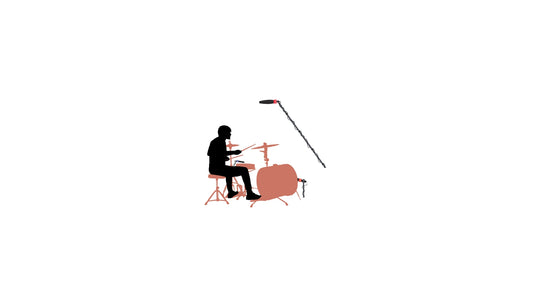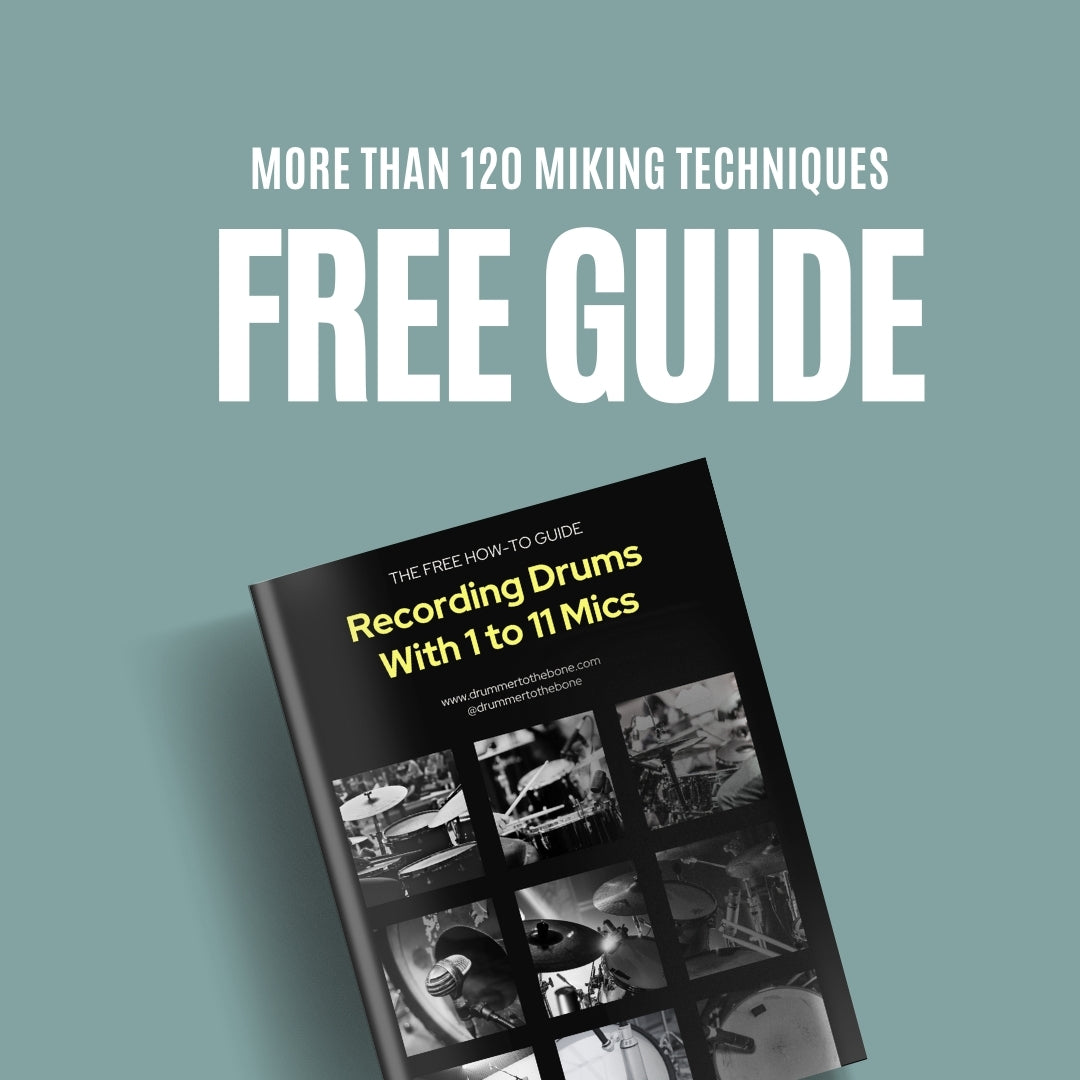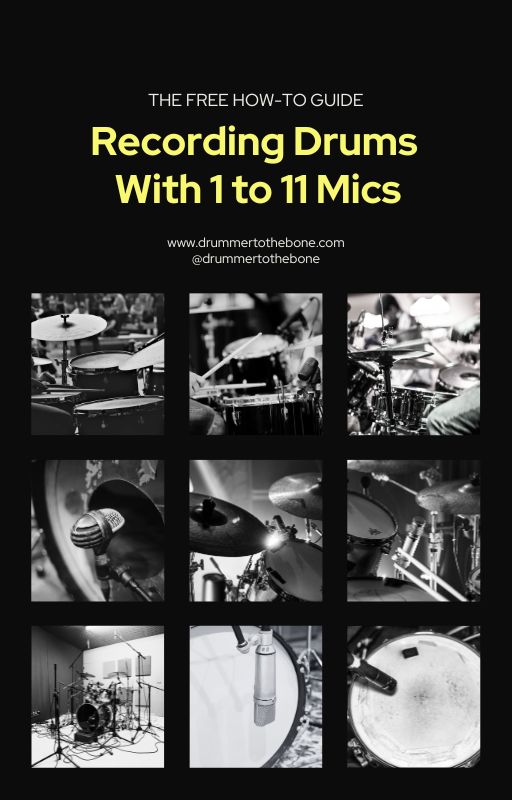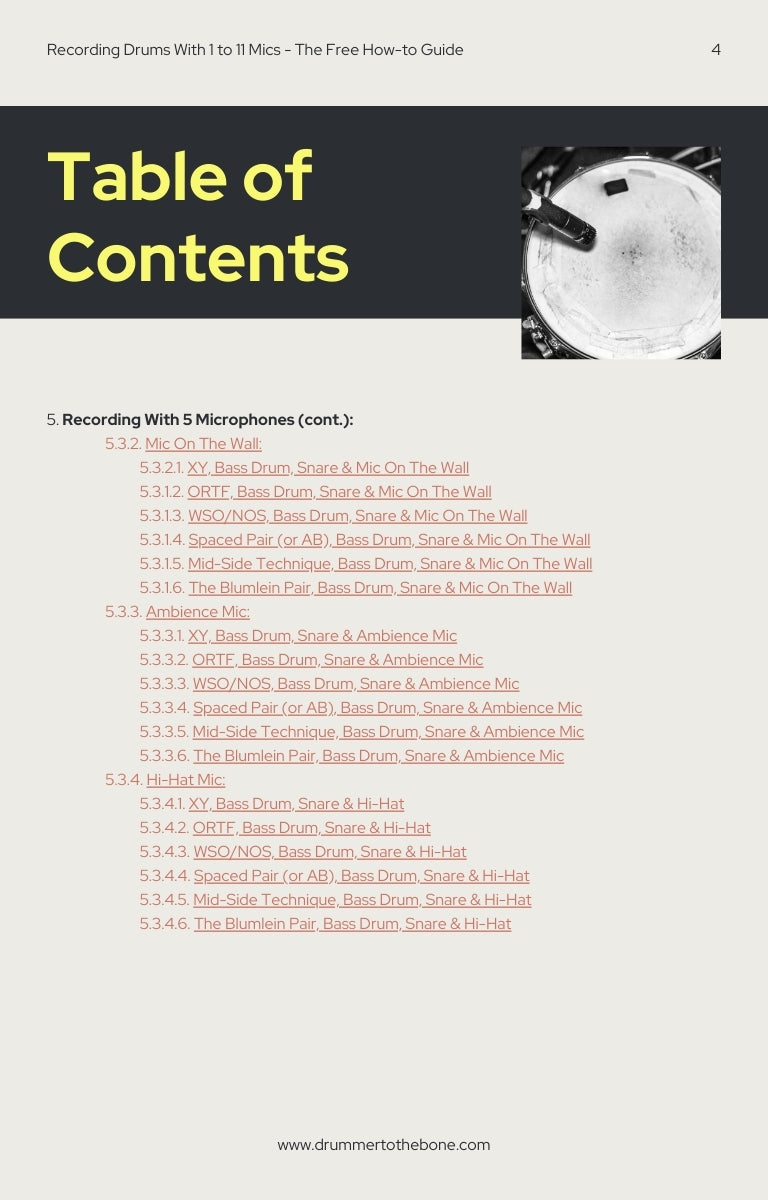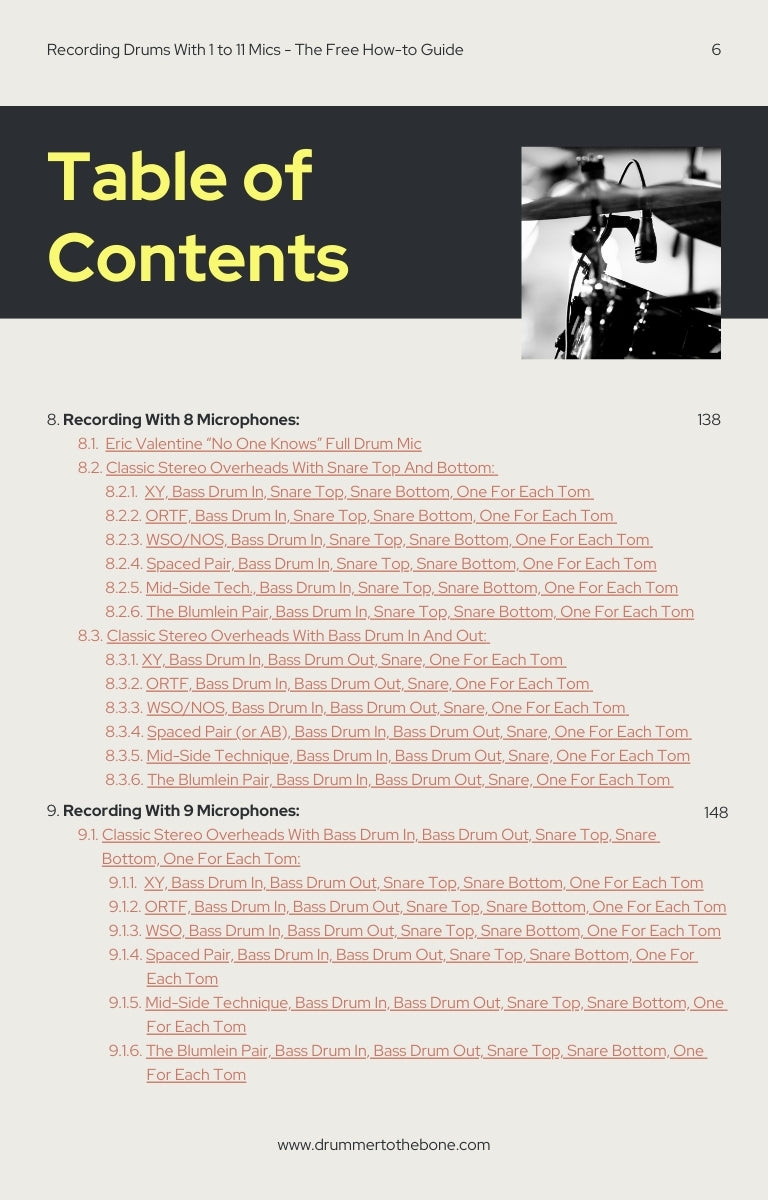The Recorderman technique, created by Eric Greedy, and used by Eric “Mixerman” Sarafin on Hazy Malaze’s album “Hazy Malaze” (2002) is a 4-mic setup: 2 overheads, a snare mic and a bass drum mic.
The trick of this technique is that the overheads are equidistant from both the snare and the bass drum. The logic behind this approach was that if the overheads were equidistant from both the snare and the kick, they would appear dead-center in the mix; while the close-mic provided the necessary boost to kick and snare.
One of the reasons why they came up with this approach is because they wanted a dead & tight sound, which the small recording room (Room A of The Village Studios, Los Angeles) helped them to achieve. So, no additional ambience mics were used
Another factor was that Dan Fadel, the drummer, is—according to Sarafin, a “super balanced” drummer. Sarafin adds, “the more the drummer plays in balance, the less microphones you need to capture their brilliance."

Let’s briefly go about the overheads positioning:
- For overheads, the Original Recorderman uses 2 ribbon mics (Coles 4038 Ribbon Microphones). If you don’t have ribbons, you can use regular condensers.
- Position the first overhead about two drumsticks in height from the top of the snare, and pointed straight down at the snare.
- Position the second overhead—which also has to be the same distance from the top of the snare—over the ride cymbal side of the drummer’s shoulder, and also point it at the snare.
- Measure the distance of the two overheads from both the bass drum and the snare drum. Both mics should be equidistant from the snare and the bass drum, in order to avoid phase issues.
- To make sure both mics are equidistant from the bass drum and the snare, use a mic cable or a long string. Hold the cable end against the bass drum where the beater makes contact with the head. Pinch the cable at the length where it makes contact with the first mic. While holding this position, pinch the other end of the cable at the length it makes contact with the center of the top head of the snare drum.
- At this point the string or mic cable should be in a sort of triangle shape. Move the top point of the triangle – the part you have pinched – to each mic to verify they are both of equal distance from the bass drum and snare.

Front View

Side view.
The Mic on the right tends to be a little further back than the right.
And now, for the final touch:
- Add a snare mic, ideally a dynamic mic, 3 fingers from the top head, pointing at the center of the drum.
- Add a mic inside the bass drum (or just outside), in order to avoid bleeding.
With these 4 mics you can have a great sounding kit. Of course, you can add more mics if it makes sense to you. If you saw the video linked in the first paragraph, you’ll notice that Sarafin added a bottom snare mic and an X-Y pair in front of the kit; but that’s more of a “safety net” as he calls it, rather than a necessity.
Pros of this technique:
- Great stereo compatibility, but with the bass drum and snare right in the middle of the mix.
- With the added boost in bass drum and snare, with their respective microphones, you have a lot more control over the balance of the mix.
- Great if you’re looking for a close & tight sound.
- Adjusts very well to small room situations—because it was developed in a small room.
Cons:
- This technique has more of a vintage vibe, which by itself is not a con, but the point is that it is not very versatile.
- If you don’t get the measurements correctly, it can be a hassle to set it up. Make sure that this is the sound you’re looking for. Although, in all honesty, most times people just eyeball it. Just make sure it sounds right.
- The drummer’s balance is key to get it to sound correctly. Even with the bass drum and snare mics, if you’re off balance and recording with only 4 mics, there’s only so much you can do afterwards. Could be a curse or a blessing.



